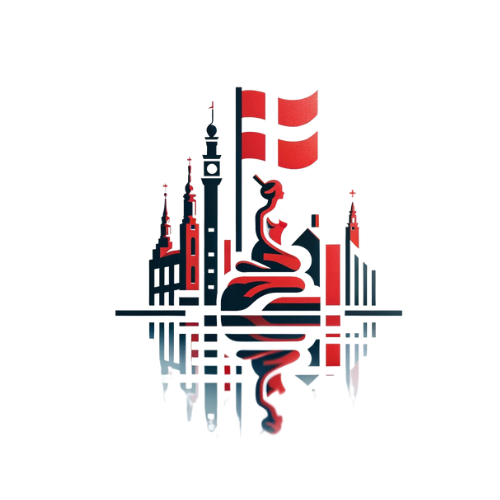As a proud Danish woman, I have had the privilege of experiencing the vibrant and unique traditions that define my country’s culture. One of the most beloved and cherished of these traditions is the Fastelavn festival. Fastelavn is a time-honored Danish celebration that holds a special place in the hearts of children and adults alike. The festival is filled with rich history, delicious food, and lively customs that have been passed down through generations. In this article, I will provide an in-depth look at the fascinating culture of the Fastelavn festival, from its historical roots to its contemporary relevance.
The Origins of Fastelavn
The history of Fastelavn can be traced back to medieval times and is deeply rooted in the tradition of Carnival. In Denmark, Fastelavn is celebrated on the Sunday or Monday before Ash Wednesday, marking the beginning of Lent. The word “Fastelavn” is derived from the German “fastel-avn,” which means “fast-evening,” referring to the evening before the fasting period of Lent. The festival was originally a pre-Christian tradition, symbolizing the transition from winter to spring and was celebrated with pagan rituals to drive away evil spirits and ensure a bountiful harvest.
The Custom of “Slå Katten af tønden”
One of the most iconic customs of Fastelavn is the tradition of “Slå Katten af tønden” or “Hit the Cat out of the Barrel.” This custom dates back to the 18th century and is similar to the British tradition of “beating the bounds.” During this lively event, a wooden barrel, adorned with a black cat, is filled with candy and hung from a tree. Children take turns hitting the barrel with a wooden stick, and the one who succeeds in breaking the barrel open is crowned “King of Cats” or “Queen of Cats.” This custom has its origins in the symbolic act of driving away evil spirits and ensuring good luck for the coming year.
Traditional Fastelavn Foods
No Danish festival is complete without an abundance of delicious food, and Fastelavn is no exception. One of the most beloved treats associated with the festival is “Fastelavnsboller,” a sweet pastry filled with cream and dusted with powdered sugar. These decadent pastries are a must-have during the festival and are enjoyed by both children and adults. Another traditional dish served during Fastelavn is “varm kakao med flødeskum,” which translates to “hot cocoa with whipped cream.” This rich and indulgent beverage is the perfect accompaniment to the festivities and brings warmth and comfort during the chilly winter months.
The Iconic Fastelavnsris Tradition
Another cherished tradition associated with Fastelavn is the custom of “Fastelavnsris,” which involves the making and decorating of decorative switches. These switches are typically made from willow branches and are adorned with colorful ribbons and feathers. In the past, it was customary for children to use these switches to playfully “whip” their parents on Fastelavn Sunday morning, symbolizing the driving away of evil spirits and the welcoming of spring. While the custom of whipping has waned in modern times, the making and exchanging of Fastelavnsris remains a beloved tradition.
The Modern Celebration of Fastelavn
While the customs and traditions of Fastelavn have evolved over the centuries, the festival continues to hold a special place in the hearts of Danes. Today, Fastelavn is celebrated with costume parties, parades, and games, providing a joyous and lighthearted respite from the long, dark winter. Children are often dressed in colorful costumes, and the streets are filled with music, laughter, and the delicious aroma of traditional Danish foods. Fastelavn has become a time for families to come together, celebrate their heritage, and create cherished memories that will last a lifetime.
Fastelavn in the Modern World
In recent years, Fastelavn has experienced a revival in popularity, with an increasing number of Danes taking pride in preserving their cultural traditions. Local communities organize special events and festivities, and schools and daycare centers often hold Fastelavn parties for the children. The festival has also become an opportunity for Danish businesses to showcase traditional foods and crafts, attracting both locals and tourists alike. The spirit of Fastelavn lives on, and its cultural significance continues to be celebrated and cherished.
The Enduring Charm of Fastelavn
As a Dane, I am immensely proud of the rich cultural heritage of my country, and Fastelavn holds a special place in my heart. The festival is a vibrant and joyous celebration of Danish traditions, bringing people together to share in the delights of food, music, and merriment. It is a time to honor our history and create new memories with loved ones, embracing the enduring spirit of Fastelavn for generations to come.
- Fastelavnsboller: Sweet pastries filled with cream and dusted with powdered sugar
- Varm kakao med flødeskum: Hot cocoa with whipped cream
- Fastelavnsris: Decorative switches made from willow branches and adorned with ribbons and feathers
As the festival of Fastelavn approaches, I am filled with excitement and anticipation for the joyous celebrations that await. The traditions of Fastelavn have brought happiness and unity to the Danish people for centuries, and I am delighted to share the magic and wonder of this beloved festival with the world.




